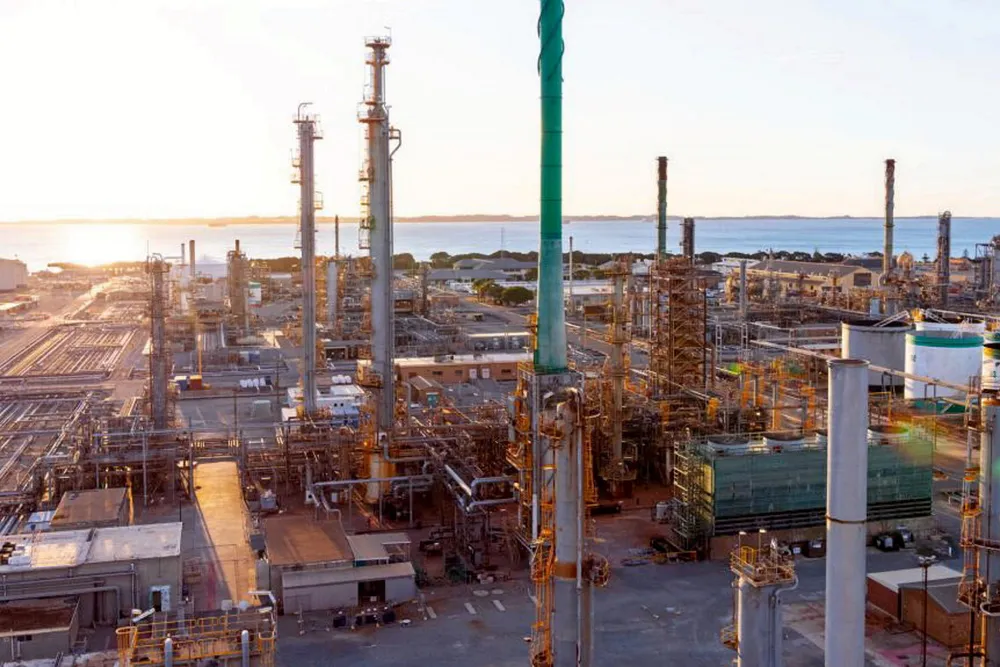BP targeting renewable fuels and green hydrogen future for former Australian refinery
UK energy giant is just months away from entering FEED on its planned development to help decarbonise Western Australia’s largest industrial cluster

BP intends to use the site, which is currently being used as a fuel import terminal, to use waste based feedstock to produce sustainable aviation fuel (SAF) and hydrogenated vegetable oil, otherwise known as renewable diesel.
“This waste based feedstock will include things like tallow, animal fat, and used cooking oil that is sustainably sourced and certified,” Nash explained.
“To produce these fuels will also need a source of hydrogen, and that will largely be generated from the pre-processing of these waste based feedstocks that will provide us some biogas to generate the hydrogen.”
Renewable fuels demand
BP claims renewable fuels can deliver carbon emission reductions of up to 90% over fossil fuels, and the UK energy giant is considering similar plants at locations around the globe, however, Nash highlights that the Kwinana site is the only such facility BP is considering in a country that does not have a renewables fuel mandate.
Despite the lack of a mandate, BP believes it has identified demand for the lower emissions fuel within Australia.
“The future demand for renewable fuels is the transport sector, particularly heavy transport operators and miners that have a need to decarbonise with an interim solution before new technology is developed,” Nash explained.
“Aviation, one of the hardest to abate sectors, particularly when you consider long haul flights, and there’s a bunch of long haul flights from Australia.
“There’s a bunch of rail that connects across this country, it’s generally using diesel, so there’s an opportunity there to decarbonise. And then finally, with Kwinana, the opportunity for marine bunkering displacing current diesel to produce and use lower emission products.”
Green hydrogen potential
BP has also partnered with the world’s largest infrastructure asset manager, Macquarie Group, to carry out a feasibility study into the potential to integrate green hydrogen production at the Kwinana site.
Nash explained BP intended to utilise power purchasing agreements from a renewable resource to power the electrolysers used to make the hydrogen.
Green vs Blue
Blue hydrogen is produced from natural gas feedstocks, with the carbon dioxide by-product from hydrogen production captured and stored. However, the process is not emissions free.
Green hydrogen is made using electrolysis powered by renewable energy to split water molecules into oxygen and hydrogen, creating an emissions-free fuel.
One of the main goals of the feasibility study is to look at the aggregation of demand for clean hydrogen in the region.
Nash explained that BP would be an initial foundation customer, using the green hydrogen in the production of renewable fuels at the Kwinana plant.
He added this would then provide the opportunity for BP to aggregate demand from other sources in the Kwinana area and bring the benefits of economies of scale.
Grid stability
Decarbonising Kwinana
“By leveraging this tremendous Kwinana industrial symbiosis, building on existing and enhancing common-user infrastructure such as a hydrogen backbone, we can support green industry and green manufacturing, not just in Kwinana, but one that can link with clean energy hubs throughout the state,” he said.
“We're starting with some demand, we have ourselves, and we have a need for that hydrogen, where we produce the renewable fuel, so there's an opportunity for us to be the foundation, and then to actually go to our neighbours and say, who else needs some of this green hydrogen to help them decarbonise? And through that, we can hopefully get the economies of scale to the lowest cost and we can make this work.”
As BP moves through the FEED stage and towards an investment decision, Nash indicated that he would like to see more government support.
“It's fair to say that other countries have more advanced incentives for their projects. and that's just a reality of doing business, particularly when you're working with a nascent industry,” he said.
“So there’s lots of good examples out there of where there are different types of policy settings. But with Australia committing to net zero, all the states committing to net zero, I mean the fundamental target is set. It’s now about how you enable that through effective policy… to seize the opportunity, because it really is a big one… particularly if we want to be the green energy exporter, similar to we are today in LNG.”
(Copyright)